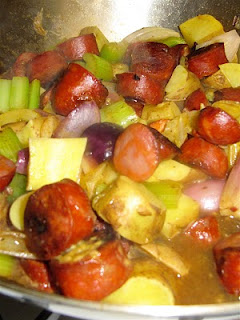 So, we enter the annual season of lists, recaps of those who left us, and the setting of dreaded resolutions. The latter is the most personal and the one that really chaps our hide by February first. While the gossipy list of scandals entertains our pedestrian selves and it is a time when we reflect on the missing place setting, it is the imposing of a pledge that forces a countdown.
So, we enter the annual season of lists, recaps of those who left us, and the setting of dreaded resolutions. The latter is the most personal and the one that really chaps our hide by February first. While the gossipy list of scandals entertains our pedestrian selves and it is a time when we reflect on the missing place setting, it is the imposing of a pledge that forces a countdown. Given the clicking off of this end of the year and the realization that the first decade of this new century is coming to a close, my resolutions are being culled from a broad swath - goals yet to be achieved, personal habits to be adjusted and future dreams to be laid-down.
But what the heck, I still have four days to indulge in naughty habits and eat way too much sugar. The Holidays fills my house with an unusual amount of chocolates – probably the only time of year I actually eat chocolate. A thoughtful friend knew well to bring white chocolate. Though my weakness is cake. Unfortunate, but fortunately, it is a quiet time for work and I can spoil myself with wicked forkfuls.
Old fashion Hummingbird, basic white cake with buttercream, cheesecake or carrot cake all fair game for my Yuletide excess. So, for a few more days eat cake.
 My Mother's Fabulous Carrot Cake - yields two 9" cakes
My Mother's Fabulous Carrot Cake - yields two 9" cakes1-1/2 cups canola oil
2-cups sugar
4-eggs - separated
1/4-cup hot water
2-1/2 cups flour
1-teaspoon baking soda
1/2-teaspoon salt
1-1/2 cup grated carrot
2-teaspoons cinnamon
1-cup currants - optional
Mix the oil, sugar and egg yolks until creamy pale yellow. Add the hot water, flour, baking soda and salt, and mix to incorporate thoroughly. Add the carrots, cinnamon and currants. Beat the egg whites to a stiff peak, but not dry.
Fold the egg whites into the carrot mixture. There should still be some clumps of whites visible. Split between two 9" cake pans, and bake in a 350 degree oven for 20 to 30 minutes, or until a cake tester inserted comes out clean.
Filling for Carrot Cake
14 ounces sweetened condensed milk
3 egg yolks - beaten
1/2-cup sugar
1/4-pound butter
1-cup pecans - whole
1-cup coconut - grated
1-teaspoon vanilla
In a one-quart saucepan mix all the “gook” ingredients together, and over a medium heat cook the filling to thicken. The filling must be kept moving and will coat the back of a spoon when done. It takes about 15 minutes of constant stirring, and I mean constant stirring. Left unattended over the heat the eggs in the filling will curdle. You can do as my mother used to do, and make one of her three children stir, as my sister and I called it, the gook.
Cool the "gook" and put half between the two layers of the cake, and then spread the remaining over the top. Store this cake un-refrigerated.




































